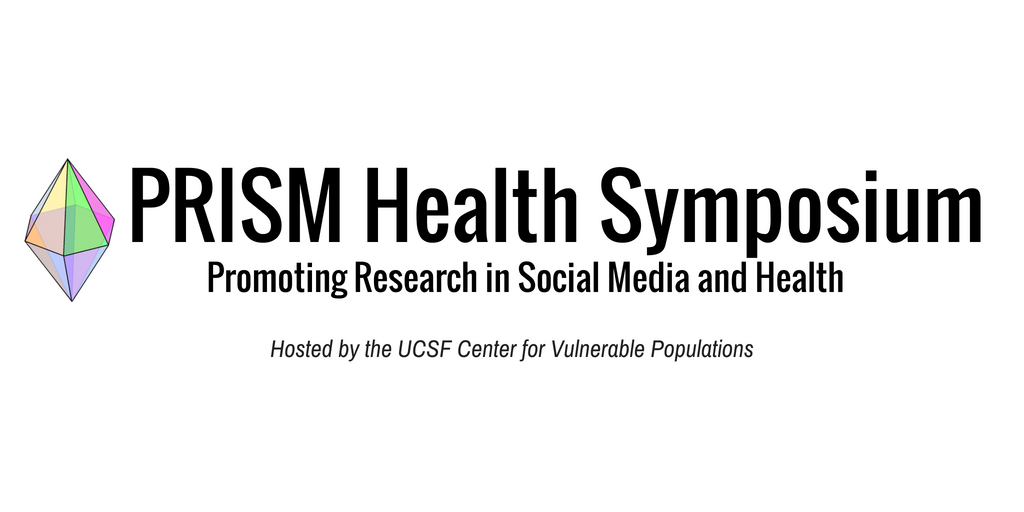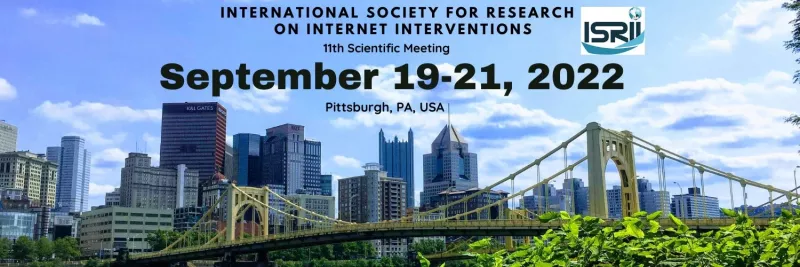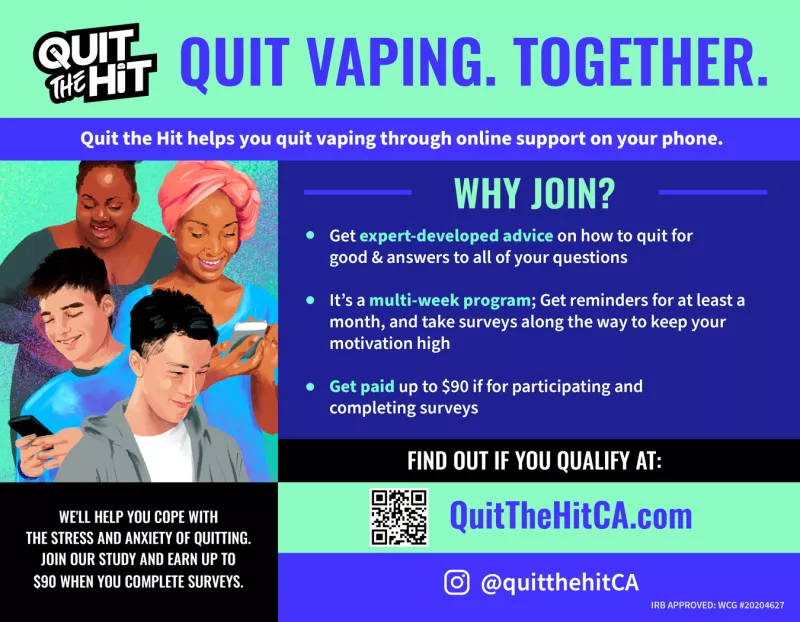Save the Date!
Pre-Conference Workshop
Date: Tuesday, November 29, 2022
Location: UCSF Mission Bay Campus, San Francisco, CA
This workshop will be a “live” mock study section. In this workshop, mock reviewers will review Specific Aims of 2-3 applicants. This session is aimed to provide feedback, and an understanding of the review process, to those actively preparing grants in social media and health. If you are interested in having your grant’s Specific Aims reviewed, please send it to [email protected] by September 16. Specific Aims will be selected for review in/at the live mock study section to reflect the breadth of methods and topics. If your Specific Aims is selected, you will be notified via email by September 30.
This workshop will have NIH Program Officers in attendance. Workshop attendees should have some familiarity with the NIH grant process and are actively preparing grants. Registration will be $50 for faculty/professionals and $20 for trainees/students. Registration is limited to 30 attendees due to venue capacity and COVID-19 safety measures.
PRISM 2022
Wednesday, November 30, 2022
Location: Fisher Banquet Room, Mission Bay Conference Center, San Francisco
The Promoting Research in Social Media and Health Symposium (PRISM) is one of the few symposiums dedicated to social media and health research. An all-day event that fosters a collaborative learning environment, PRISM provides a one-of-a-kind opportunity for participants to meet, collaborate, and advance their work. Now in its seventh year, PRISM has hosted academic researchers, industry partners, patients, and advocates from over 40 unique institutions. Registration will be $100 for faculty/professionals and $40 for trainees/students.
Events
International Society for Research on Internet Interventions (ISRII) 11th Scientific Meeting
Pittsburgh, PA | September 19-21, 2022
Storm Clouds and Silver Linings: How Digital Technologies Have Helped Us Weather the COVID Pandemic
Registration is now open!
Opportunity
Participate in Research
Physicians at the University of California, San Francisco are running a research study to learn more effective ways to support quitting vaping. Participants can receive up to $90 to take a survey and go through a support program to quit vaping! See if you qualify: www.QuitTheHitCA.com.
Recent Social Media and Health Publications
Awao S, Park CL, Russell BS, Fendrich M. Social Media Use Early in the Pandemic Predicted Later Social Well-Being and Mental Health in a National Online Sample of Adults in the United States. Behav Med. 2022 May 10:1-10. doi: 10.1080/08964289.2022.2069667. Epub ahead of print. PMID: 35538743.
This study examined associations of frequency of use of different social media and the motives for use with subsequent social well-being and mental health during the early months of the COVID-19 pandemic. Greater frequency of Facebook and video chat app use predicted higher levels social support, but also higher levels of cumulative Covid-19-related stress appraisals and posttraumatic stress symptoms. Greater use of video chat apps also predicted less loneliness. Greater use of both Instagram and Snapchat predicted more anxiety and cumulative Covid-19-related stress appraisals. Greater use of Instagram also predicted higher levels of posttraumatic stress symptoms. Motives for use (e.g., connect with others, waste time/avoid responsibility, online video gaming with others) also differentially predicted social well-being and mental health.
Chen SS, Lam TP, Lam KF, Lo TL, Chao DVK, Mak KY, Lam EWW, Tang WS, Chan HY, Yip PSF. Motivations for Online Expression, Willingness of Online Help-Seeking, and the Risk of Suicide Among Hong Kong Youths: A Mixed-Methods Study. Cyberpsychol Behav Soc Netw. 2022 May 20. doi: 10.1089/cyber.2022.0007. Epub ahead of print. PMID: 35594242.
This evaluation sought to understand the motives of online expression among Hong Kong youths and their relationships to online help-seeking willingness and suicide risks. Quantitative analyses demonstrated the prevalence of each online expression purpose, with most reporting on "emotional expression" and "life sharing and documentation," but variations identified by gender, school academic banding, and suicide-related experience. Notably, motives of "emotional expression" and "image building" were associated with increased suicide risks, while the purpose of "life sharing" was associated with decreased suicide risks. Those who expressed online for "self-expression" and "friend making" showed a stronger willingness for online help-seeking.
Cirillo MN, Halbert JP, Smith JG, Alamiri NS, Ingersoll KS. #BingeDrinking-Using Social Media to Understand College Binge Drinking: Qualitative Study. JMIR Hum Factors. 2022 May 30;9(2):e36239. doi: 10.2196/36239. PMID: 35635740; PMCID: PMC9153908.
This study aimed to understand one university's student attitudes toward alcohol use by examining student posts about drinking on social media platforms and to identify opportunities to reduce alcohol-related harm and inform novel alcohol interventions. In total, 1151 social media posts were included from Twitter, Instagram, Greekrank, Reddit, College Confidential, Facebook, and YouTube. Posts included both implicit and explicit portrayals of alcohol use. Across all types of posts reviewed, positive drinking attitudes were most common, followed by negative and then neutral attitudes, but valence varied by platform. Posts that portrayed drinking positively received positive peer feedback and indicate that drinking is viewed by students as an essential and positive part of university culture.
Deiner MS, Kaur G, McLeod SD, Schallhorn JM, Chodosh J, Hwang DH, Lietman TM, Porco TC. Distinct Diurnal and Day of Week Online Search Patterns Related to Common Eye Conditions: A Google Trends Approach. J Med Internet Res. 2022 May 6. doi: 10.2196/27310. Epub ahead of print. PMID: 35537041.
Co-authored by PRISM Steering Committee member, Dr. Mike Deiner, this observational study sought to investigate if the public consistently searches for ophthalmologic conditions at different hours of the day or days of week. Hourly Google search data from 10 USA states from 2018 for eye-related and control search terms were analyzed for cyclical hourly and day of week online search patterns. Significantly distinct diurnal and day-of-week search patterns for eye-related terms were observed but with differing peak time periods and cyclic strengths. Of the eye related terms, "pink eye" showed the largest diurnal amplitude-to-mean ratios. Stronger signal was restricted to and peaked in mornings, and amplitude was higher on weekdays. In contrast, "dry eyes" had a higher amplitude diurnal pattern on weekends, with stronger signal occurring over a broader evening to morning period and peaking in early morning.


